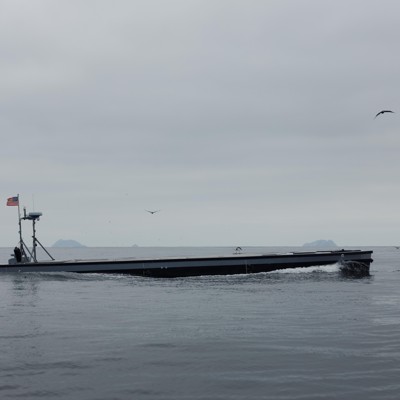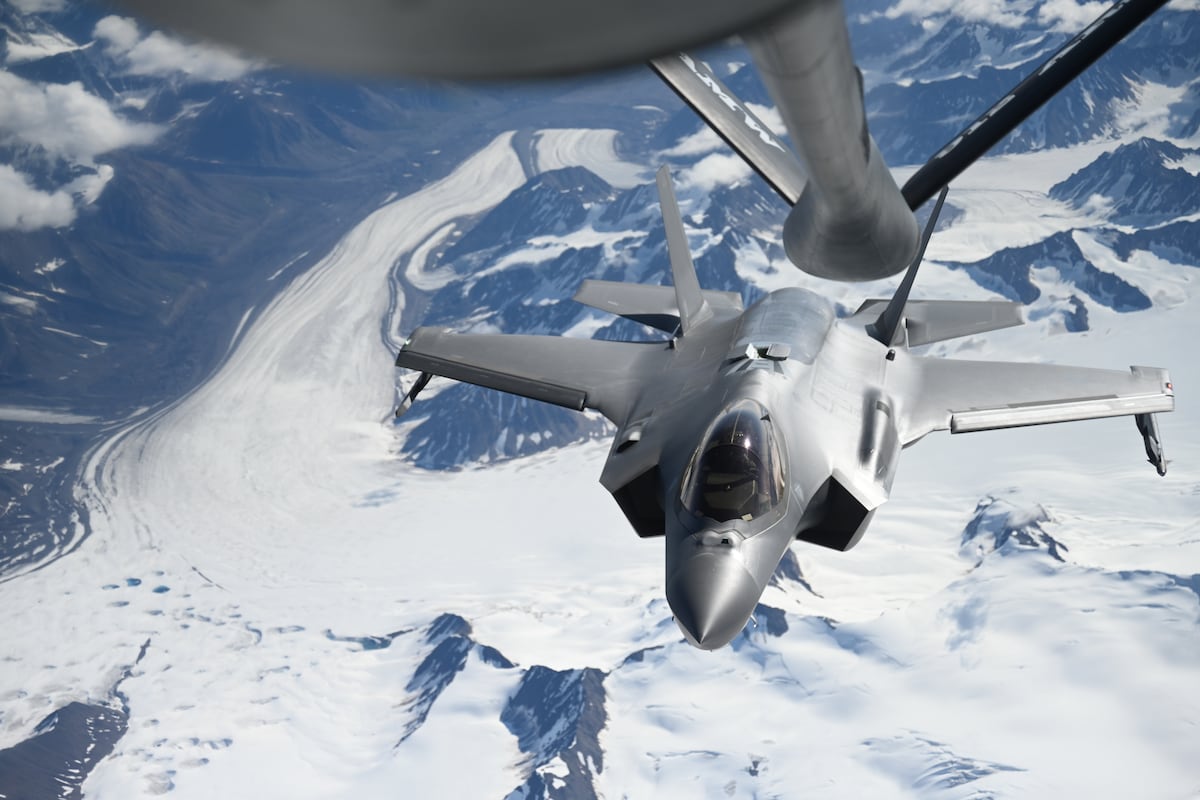Back in 2022, the Marine Corps called up Leidos looking for a discrete, unmanned surface vessel that could transport thousands of pounds of supplies without being seen.
Nine months later, II Marine Expeditionary Force had Sea Specter in hand for testing as part of the Corps’ Autonomous Low-Profile Vessel program. At 65 feet long and with a profile from inches to just a couple feet above the water, it’s reminiscent of the self-propelled semi-submersible boats drug traffickers have used to cross oceans in recent years.
“I think that it’s OK to say that those narco subs inspired the concept, but that’s where the similarities end,” Jeff Bowles, chief engineering officer at Gibbs & Cox, a Leidos company, told Defense One. “Narco subs are dirty. They’re dangerous. They’re not engineered. But in principle, their mission is the same—move a large volume of cargo with the minimal chance of being observed by anyone else, right?”
In the Defense Department’s shift from counterinsurgency in the Middle East to near-peer conflict in the Indo-Pacific, the concern that enemies will be able to shoot down planes or blow up supply ships is very real.
“So you might not be able to take something that’s a big, high-value target, or something that’s slow moving or highly observable, to deliver re-supplies to the troops, because it might give away their position,” Bowles said.
The Marines, who are training to fight from Pacific islands, are looking for a fleet of floating logistics drones that can fan out to multiple outposts at the same time.
Originally remote-controlled, the Marine Corps requested an autonomous feature, Bowles said, which is done with waypoints, or route markers the boat’s sensors can seek until it gets to its destination.
“And it’ll try not to hit anything,” Bowles added. “If it’s going to have a collision with another vessel or some other fixed object, it will stop and notify for help or do some basic maneuvers to avoid potential collision.”
The Marine Corps has three of them now, the third a second-generation prototype being tested by the 12th Marine Littoral Regiment in Japan.
With a sensor mounted 8 feet above the deck, the ALPV can see about 5 to 7 miles in front of it, and can carry 5 tons for 2,300 nautical miles, traveling at 8 knots. Tie-downs inside the boat are designed to hold pallets, so the vessels can be loaded down with ammunition, food, fuel, water, or anything else.
For example, from Guam to the Philippines is about 1,500 miles. Ideally, Bowles said, they’d send a couple dozen ALPVs loaded with gear, so if they lost half of them, there would still be adequate supplies to deliver.
With a different sensor package, they can also be used for communications.
“This thing could loiter in a prescribed area for a very extended duration,” he said. “It could also form a picket line to look for intruders. You could line these up, you know, and look for human trafficking, or any type of people encroaching on U.S. territory. These things have the endurance to sit there.”
It also has open architecture for navigation, so a customer can add whichever autonomy software they choose.
The company is anticipating more military interest if Congress passes the reconciliation bill, which includes over $1 billion for small unmanned vehicles. The Army and Special Operations Command have both reached out, Bowles said, but haven’t placed an order.
“So the ability to turn out individual variants very quickly, from an operational testing and evaluation perspective, we believe, is something that we’re going to find our customers asking of us,” Bowles said.
Leidos is also exploring new materials for the Sea Specter, which is currently made of wood.
“And that’s not the solution that we believe is right for the long-term, and we’re looking to move into preparing for high-volume production out of a different material,” Bowles said.
Something like fiberglass would be lightweight and resistant to corrosion, but a metal like aluminum or steel are also options—though they add to the overall weight of the boats, which means it takes more effort to transport them.
For now, Leidos expects the Corps to make ALPV a program of record in 2027, “and we certainly hope that they select Sea Specter to work with,” Bowles said.
Read the full article here







Leave a Reply